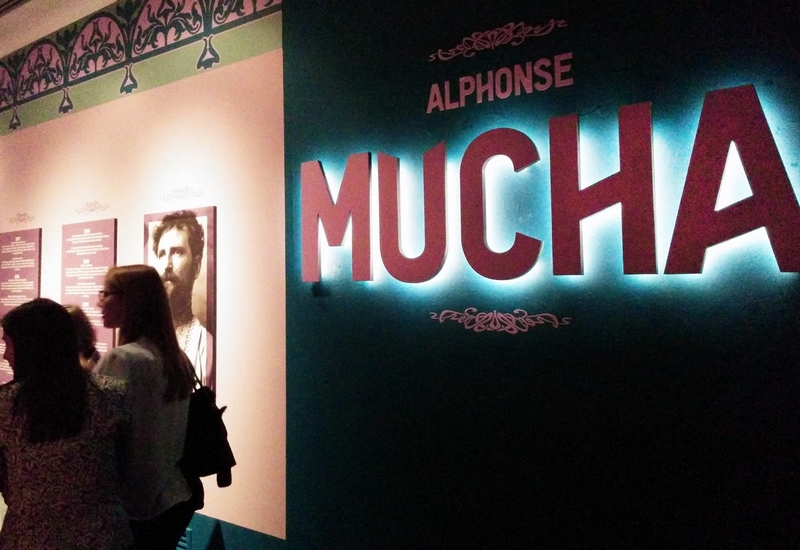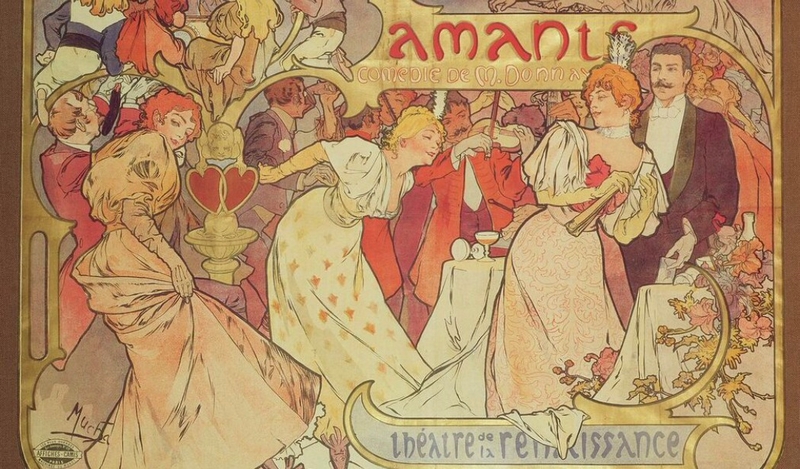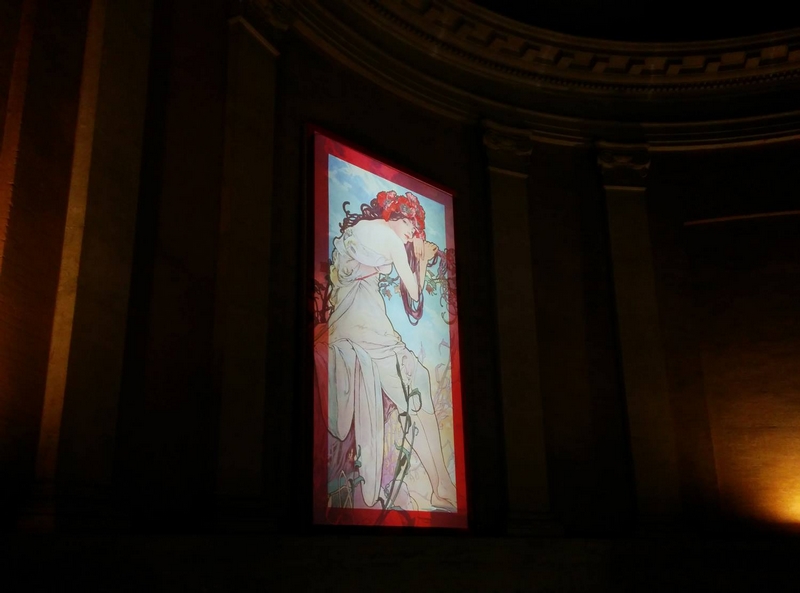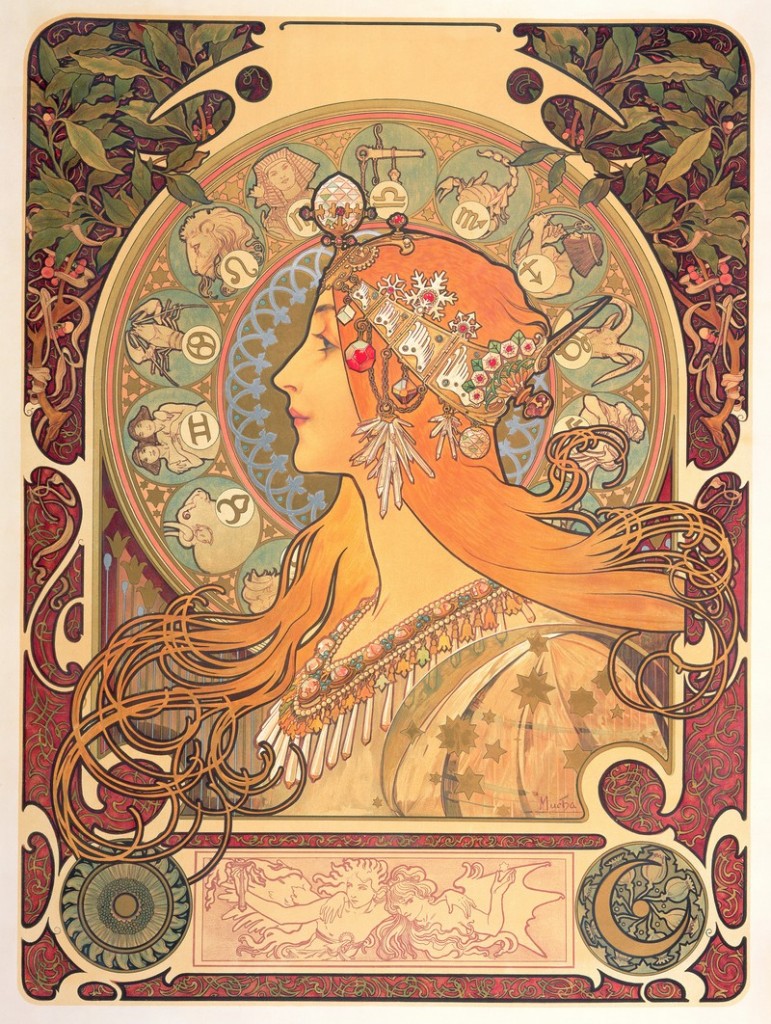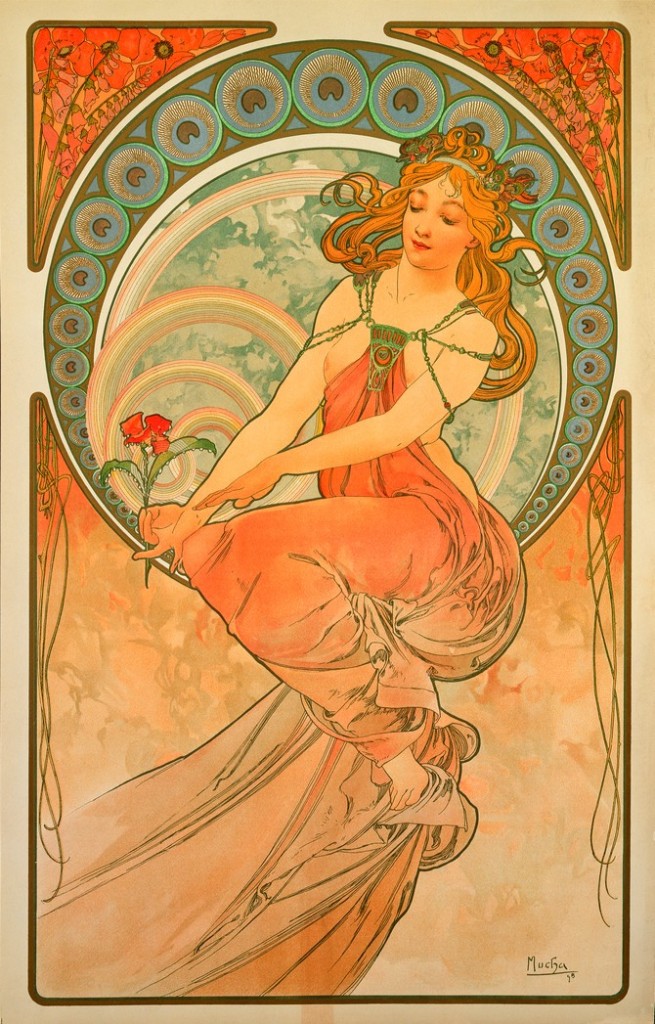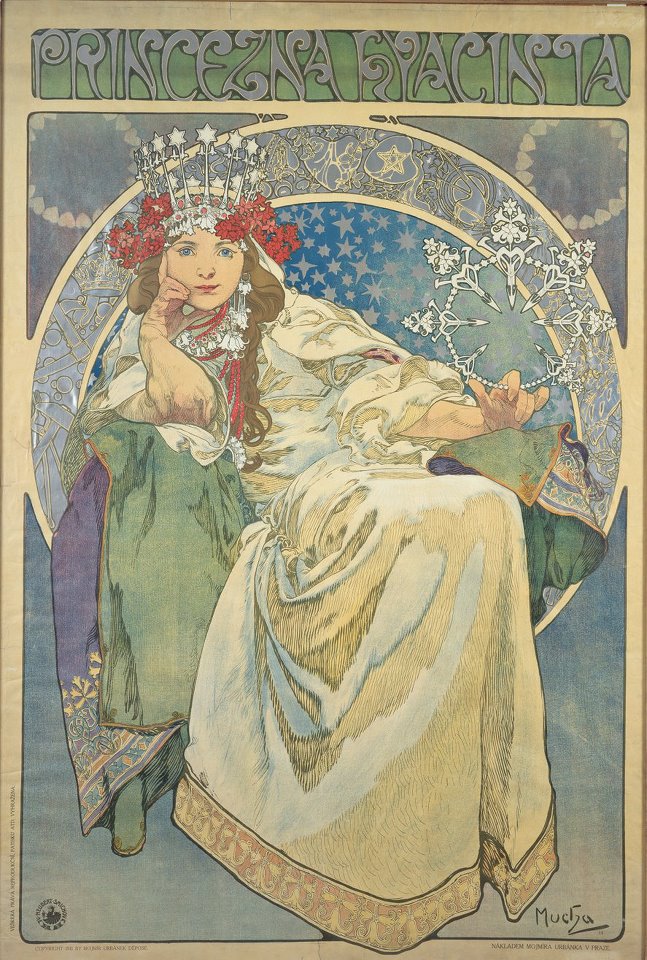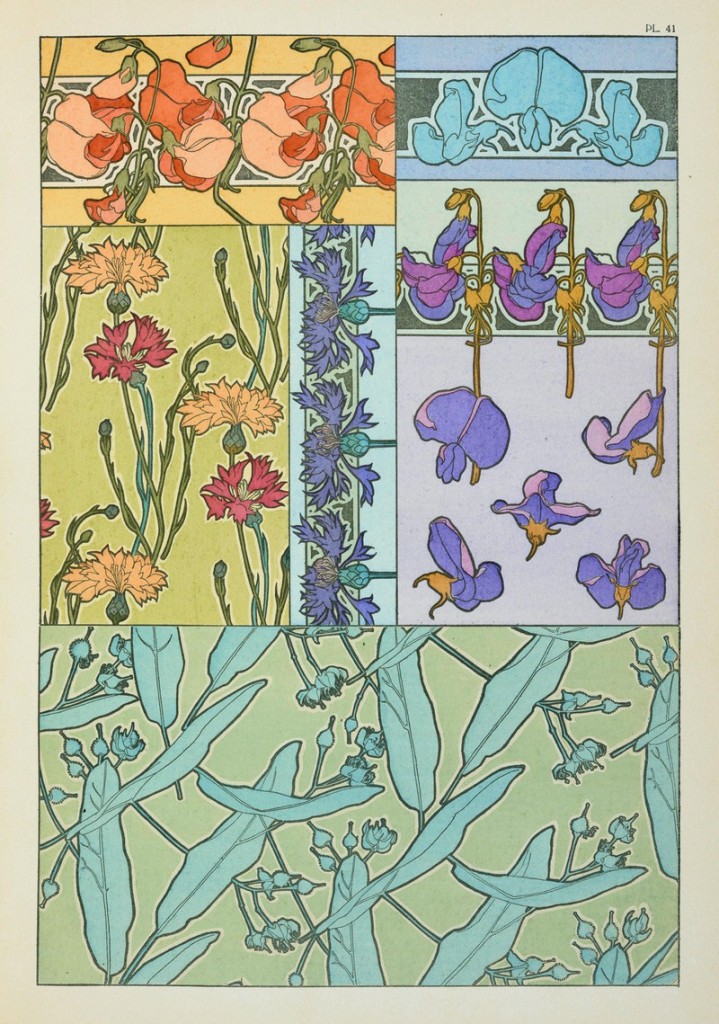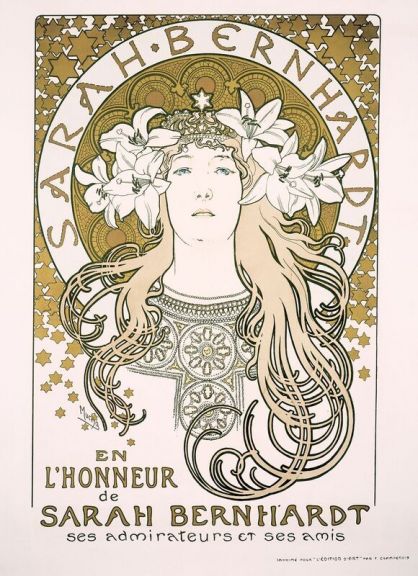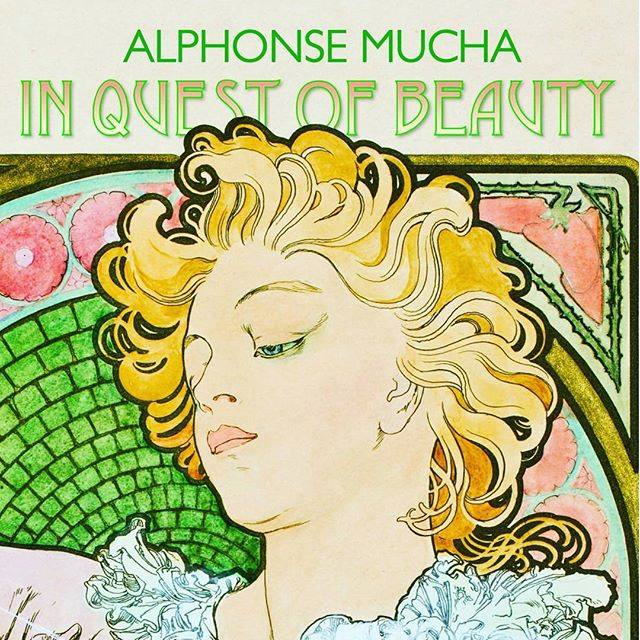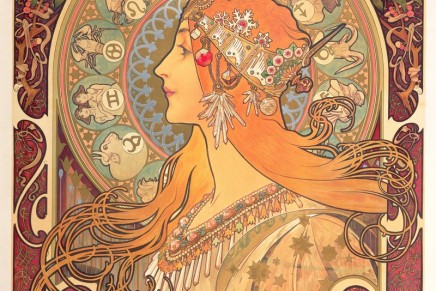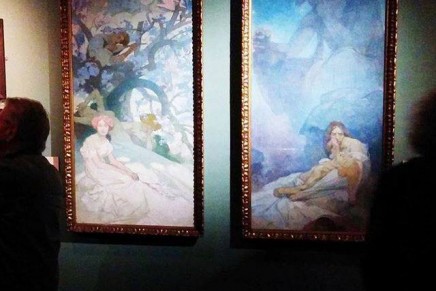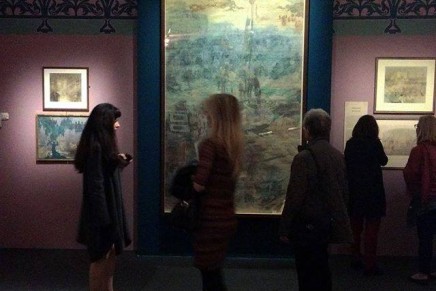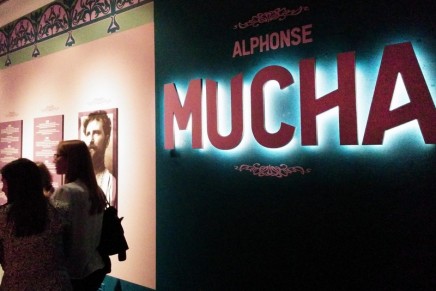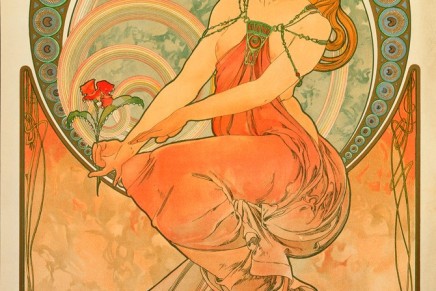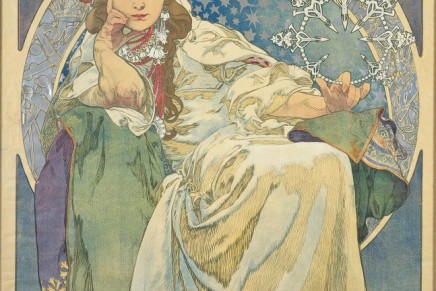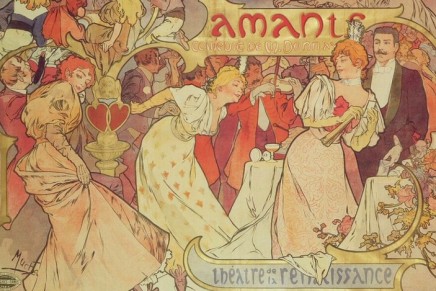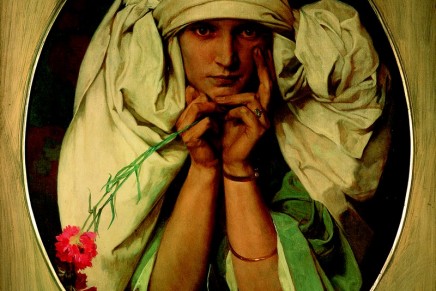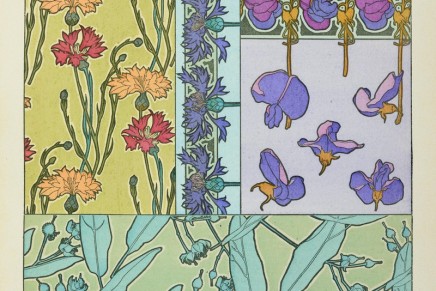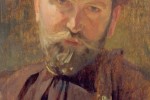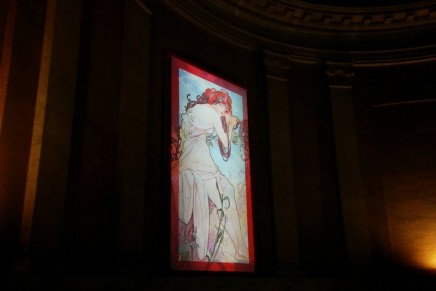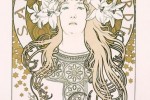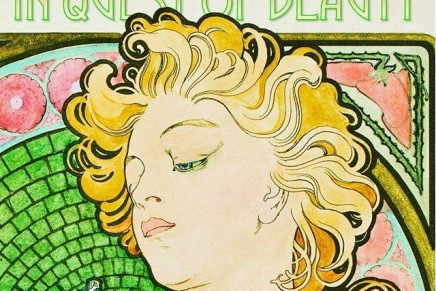A sneak peek of the new Alphonse Mucha show now open in Rome!
A great retrospective dedicated to Czech-born Alphonse Mucha (1860–1939), the Art Nouveau inventor and one of Europe’s most renowned artists in the late 19th and early 20th century, is staged in Rome at the Vittoriano – Ala Brasini.
One of the most celebrated artists in Europe in the late 19th and early 20th century, Alphonse Mucha is known all over the world as one of the fathers of Art Nouveau, the artistic movement characterized by the use of soft lines, floral forms and plant motifs that blossomed in the Paris of the Belle Époque and then spread throughout Europe. He was in reality a multi-faceted and versatile artist as well as a great experimenter with different styles and approaches, firmly convinced that the value of art derives from reflection that does not refer exclusively to the aesthetic sphere but rather finds completion there.
It was Christmas 1894 and Sarah Bernhardt was about to open in a new play entitled Gismonda. None of the various posters designed for her by different commercial artists had met with her approval and there was now no one left in the city apart from Alphonse Mucha, who produced one in great haste. The printer was bewildered. He had never seen anything like it. In its original fusion of Byzantine influences and Art Nouveau stylistic devices, the poster looked frighteningly modern and he was sure that the actress would reject it. Bernhardt instead immediately asked to meet Alphonse in her boudoir. No sooner had he entered than she sprang to her feet, embraced him and told him that her had made her immortal. From then on she would allow no one else to portray her.
This work made Alphonse Mucha the greatest poster designer of his time and people in France began to use the term “Mucha style” for his unmistakable images. The same period saw the creation of the “Mucha woman”. When he was invited to take part in the Paris Exposition Universelle of 1900, he was at the peak of his fame. His creations were plastered across all the walls and the Mucha style was chosen for all the major advertising campaigns.
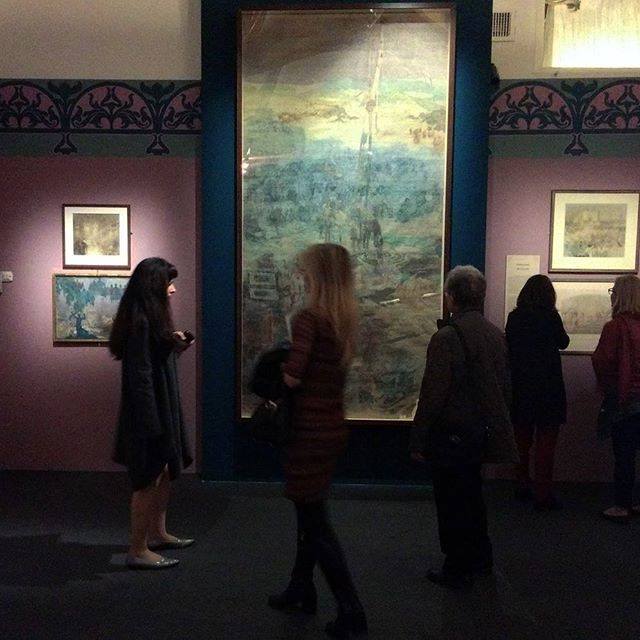
Featuring over 200 paintings, posters, drawings, decorative works and items of jewellery, “Alphonse Mucha” at the Vittoriano – Ala Brasini exhibition traces the artist’s entire creative trajectory with an abundance of detail and works through six thematic sections that present the different stylistic nuances and spheres of action: The Bohemian in Paris, The Creator of Images for the General Public, The Cosmopolitan, The Mystic, The Patriot and The Artist-Philosopher.
- Section One – The Bohemian in Paris
Posters like Gismonda, La Princesse lointaine (1896) and Médée (1898), books and other works connected with Sarah Bernhardt greet the visitor in this initial section tracing the debut of Mucha as a bohemian artist – in both the geographical and figurative senses – on the fringes of French society and the success that followed his Gismonda poster for the great actress. Together with a series of playbills and other works produced for the “Divine Sarah”, the section presents illustrations and some of the artist’s early drawings to demonstrate his solid academic training. - Section Two – The Creator of Images for the General Public
The artist’s approach to the production of posters and creation of the characteristic Mucha style is examined in depth through examples of commercial art and decorative panels. Among other things, the section presents the Documents décoratifs (1902), a practical guide to design for craftsmen intended “to help instil aesthetic values in the production of arts and crafts”. - Section Three – The Cosmopolitan
The central elements around to which the third section develops are Alphonse Mucha’s rise to fame against the background of the 1900 World’s Fair through a series of works associated with the Parisian event and his collaboration with the renowned French jeweller Georges Fouquet (1862–1957). The works of Mucha’s American period are also featured here with a particular focus on those revealing the artist’s relations with the world of the stage, including decorations for the German Theatre in New York and the posters for the actresses Leslie Carter and Maude Adams.
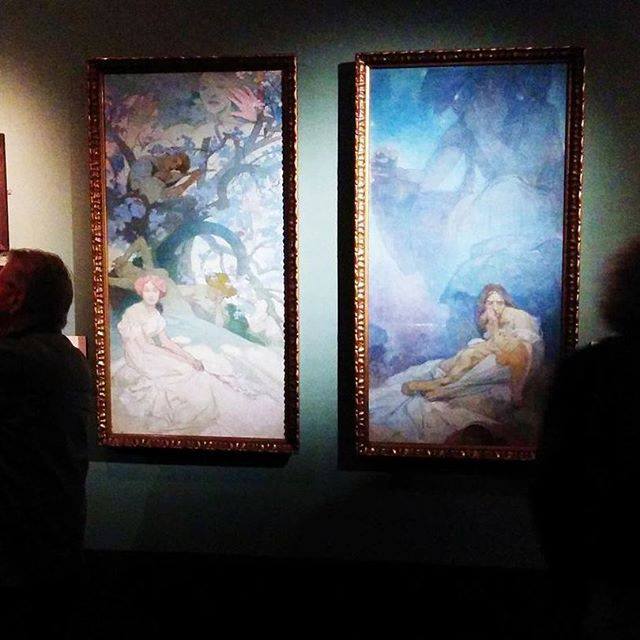
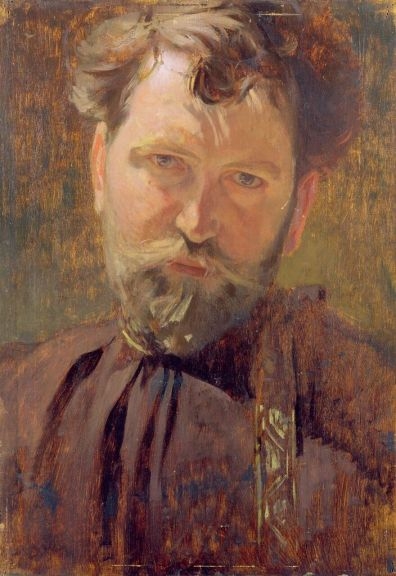
- Section Four – The Mystic
Mucha felt the attraction of spiritualism at the end of the 19th century and became a friend of the celebrated Swedish playwright August Strindberg, whose mystical philosophy influenced him deeply. Closely connected with Theosophical circles in Paris, he joined the city’s Masonic lodge in 1898.?The section examines the influence of spiritualism and Masonic philosophy in Mucha’s works, which is particularly evident in Le Pater. Published in 1899, his illustrated book constitutes a message on human progress – the way in which mankind can attain universal truth – addressed by the artist to future generations through the words of the Father and illustrations drawing inspiration from Masonic symbolism. Also featured are the artist’s expressionist pastels, never exhibited before his death.
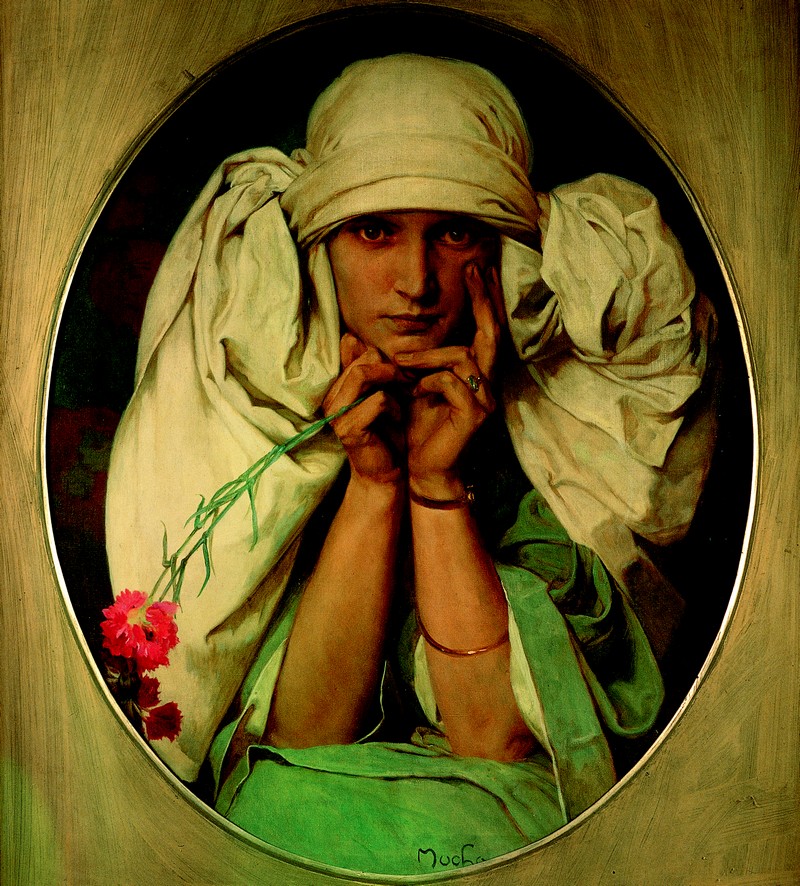
- Section Five – The Patriot
Mucha returned to his native land in 1910. Ever since his departure from Ivancice thirty years earlier, the artist had cherished the dream of using art to work for his country, an idea that been guided him throughout his life. This section presents the patriotic dimension of Mucha through a great variety of works produced for his homeland before and after its independence. Focusing particular attention on the Slav Epic, it shows how the artist arrived at the creation of this monumental work through whole variety of preparatory works including large and small studies as well as documentary and studio photographs. - Section Six – The Artist-Philosopher
Mucha’s dream came true in 1918, as one of the consequences of World War I was the birth of Czechoslovakia. He now extended his vision of Slav unity to embrace all mankind and continued to strive in this direction until the end of his life. In describing Mucha as a philosopher, the section examines works that exemplify his humanitarian ideals as well as his reaction to the threat of war in a rapidly changing world.
The exhibition ends with Mucha’s last project, the triptych of The Age of Reason, The Age of Wisdom and The Age of Love, conceived as a monument to mankind as a whole. Commenced in 1936, when the terrible threat of war was taking increasingly concrete shape, the work was intended to present reason, wisdom and love as the three key principles of humanity, whose harmonious combination would foster human progress. Even though Mucha was unable to complete the project, his studies for the triptych are still enough to convey his message of universal peace.
“Alphonse Mucha” exhibition is at the Vittoriano – Ala Brasini in Rome until September 11, 2016 (Curated by Tomoko Sato, curator of the Mucha Foundation).

